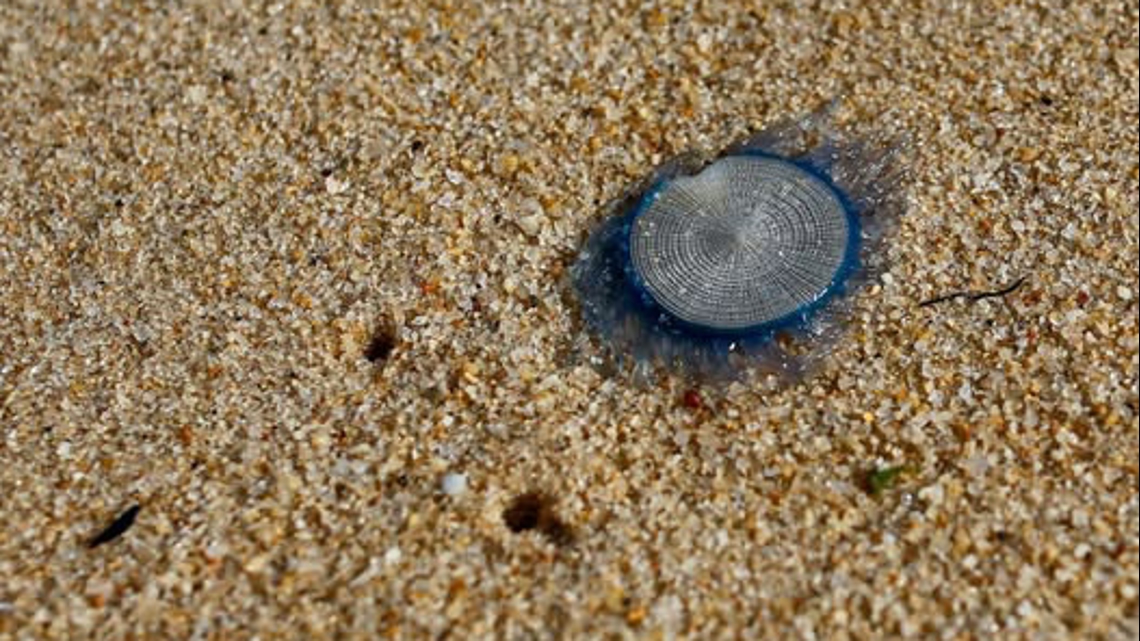Beachgoers along the Texas coast are spotting shiny blue creatures washing ashore. It’s not a jellyfish, but here’s why you should admire it from a distance.
GALVESTON, Texas — Beachgoers along the Texas Gulf Coast are encountering something strange and stunning washing ashore: the Blue Button, or Porpita porpita. It looks like a jellyfish, but according to Galveston Island State Park, it’s actually a floating colony of tiny animals.
“Spotted something shiny and electric blue on the beach? That’s a Blue Button … not a jellyfish, but a floating colony of tiny animals!” the park shared on social media.
EDITOR’S NOTE: The video above is from a report on Blue Buttons sightings in 2023.
Though “mostly harmless,” the park warns the Blue Button can cause mild skin irritation, so it’s best to admire — not touch.
According to Texas A&M University at Galveston, Porpita porpita is a colonial polyp made up of a whitish to golden-brown circular disk with air chambers that help it float. The disk’s edges are often ringed in blue or green, with attached tentacles (technically hydroid polyps) of various lengths. These tentacles have branches lined with stinging cells used to catch prey, and the mouth is located beneath the disk.

Blue Buttons grow to about 2 inches wide and are often mistaken for jellyfish. They resemble the “by-the-wind sailor” (Velella velella), but lack the sail and have longer tentacles.
When and where to spot them
The creatures float on the surface of the Gulf of Mexico and frequently wash ashore when winds blow onshore, according to Texas Parks and Wildlife.
What to do if you find one
Texas Parks and Wildlife encourages beachgoers to leave them untouched.
“Nature’s weird and wonderful, right?” the park added.
